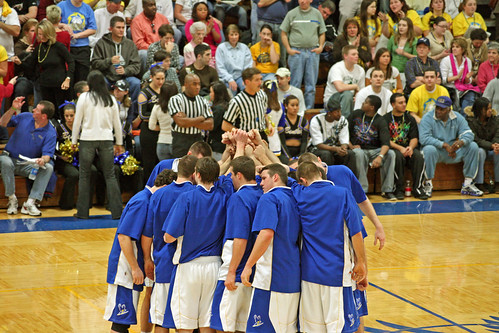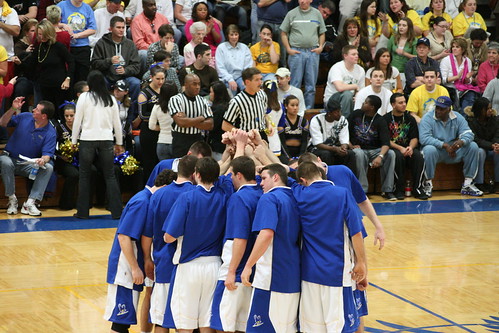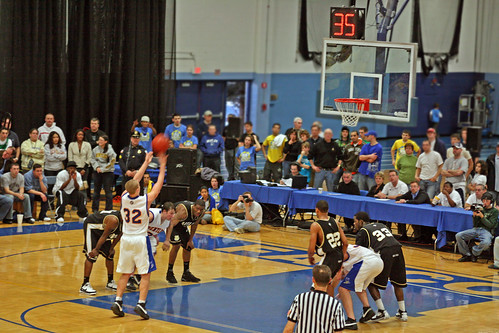I finally got around to processing some of the pictures I took this past weekend. I wanted to share a few.
How does that one look? I like to think it passes as a ‘normal’ shot. What’s not evident is that it was underexposed, poorly metered, had a nasty green color cast, and had everything in perfect focus. Tweaking photos in Photoshop requires striking a delicate balance. Too little touch-up and the image doesn’t look that great, and too much and the image looks pathetically artificial.
I like to think this one is a good compromise. I used Levels as well as the Shadows & Highlights tool to bring out a lot of the detail that was lost: some areas were too dark (people), and others were too bright (the court). I bumped up saturation and contrast every so slightly (that’s an easy one to take too far), and then used my new favorite Photoshop tool, a ‘smart selector,’ which let me easily select the crowd, and nothing else. It worked remarkably well at letting me not get any of the players or the court. With that, I applied a slight Gaussian blur to the crowd, to throw them a little bit out of focus. It’s what it should have looked like anyway, had it been shot with a faster lens.
Here’s the same shot straight out of the camera. You can see that it’s not really bad, and, side-by-side, it actually look a little more “natural.” But the players are a little too pale, the crowd is a little too distracting, and so forth.
Now here’s another one I took:
At a glance, this looks like a decent photo. Your eyes should be drawn right to the player as he makes his shot (I love shooting a camera with negligible shutter lag!) (The motion blur on the ball which looks kind of cheesy to me is actually legitimate.) The players, the rim, and the backboard all look nice and sharp. But if your eyes wander the crowd, you can quickly see that my attempt at a few tiers of Gaussian blur were amateurish. Having stuff like the open doors and scaffolding in the back of the gym is distracting. Again, had I been shooting a nice 200mm f/2.0 (not yet released, much less within my budget), it would have been thrown out of focus. But I was shooting with a lens at f/5.6, leaving stuff like that remarkably in focus. I started by selecting all the background junk and applying a Gaussian blur, but to mimic real life blur gets complicated in this setup. I wanted to throw the fans near the court slightly out of focus, but let the doors and walls be further blurred. This required multiple tiers of blurring, and left some strange effects. You’ll notice a few people with bodies that are mostly in focus, but heads that are exceptionally blurry. With a little more time, I could probably improve on this, but this was one of my first attempts at working seriously to manage background blur, so I instead offer it, with its myriad flaws, as an example.


